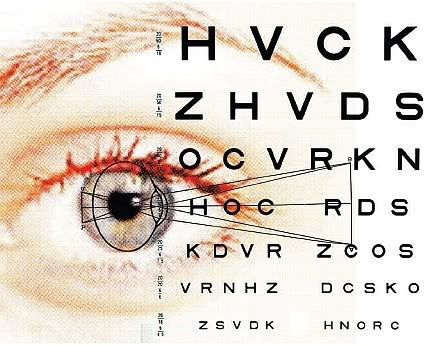Too often, we don’t fully appreciate what we’ve got until it’s gone. In retrospect, we’d consider trading our most prized possessions to recapture a lost friendship, a great job, a fond past time or good health. Though it’s often taken for granted, vision is what we rely on most to take in the world around us. What we see molds and inspires us. Perhaps this is why dealing with age-related vision problems can be devastating. There’s hope, though, as proper eye support (including good nutrition) can affect eye health later in life.
Americans have some understanding that nutrition and vision are tied together, partly thanks to the age-old advice that carrots will help one’s eyes. “While they may not know specifically that this is because carrots have carotenoids in them,” points out Bob Capelli, vice president of sales and marketing at Cyanotech, Kailua-Kona, HI, “the association between diet and eye health seems to be well embedded in the American psyche.” But, how deep does this knowledge go?
Seeing Eye to Eye
With Physicians
Unfortunately, industry insiders aren’t convinced that specific information about eye-friendly foods and dietary supplements are on consumers’ radars. “There is awareness about how certain ingredients are important to maintaining eye health (lutein for example) and some people know which foods contain high amounts of those ingredients, but almost no one knows how often these foods should be part of their diet or how much they need to eat,” says Phil Gowaski, sales and marketing manager of Chrysantis, Inc., West Chicago, IL.
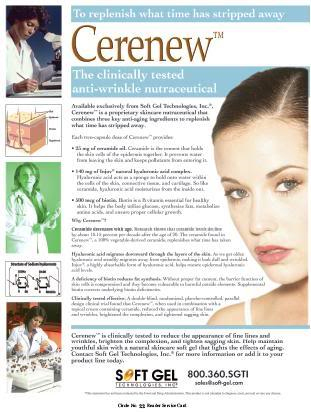 One reason for the lack of knowledge about nutrients for eye health is that it often isn’t discussed between eye medical specialists and their patients. Says Frank Schönlau Ph.D., director for scientific communication of Horphag Research UK Ltd., “In the medical community, ophthalmologists are considered among the most conservative physicians. They are considered somewhat hesitant and critical towards fundamentally new concepts until there’s solid evidence available.”
One reason for the lack of knowledge about nutrients for eye health is that it often isn’t discussed between eye medical specialists and their patients. Says Frank Schönlau Ph.D., director for scientific communication of Horphag Research UK Ltd., “In the medical community, ophthalmologists are considered among the most conservative physicians. They are considered somewhat hesitant and critical towards fundamentally new concepts until there’s solid evidence available.”
This hesitancy may be because many supplements have not been vetted by the U.S. Food and Drug Administration, says Gowaski. Although certain studies (like the National Eye Institute’s Age-Related Eye Disease Study [AREDS]) had a positive effect on how many eye specialists view certain supplements, “the only supplements for eye health some of them eventually talk about are the AREDS ones,” he adds. This important study found “that taking high levels of antioxidants and zinc can reduce the risk of developing advanced age-related macular degeneration by about 25%” (1). Completed in 2001, this clinical trial followed 3,600 participants and is a major support beam for the use of nutrients like beta-carotene, zinc, vitamin E, vitamin C and iron for eye health. While the study is an excellent start, additional research is needed before many ophthalmologists feel comfortable discussing these and other dietary supplements with patients.
On a related note, Gowaski adds that a lack of well-defined recommended daily intakes (RDIs) for many eye health ingredients has stymied the acceptance of supplements among eye specialists. “Lack of RDIs make consumer education very difficult and hence the problem,” he notes.
It should be noted that many physicians do feel that dietary supplements are a good option. According to Richard Passwater, Ph.D., vice president of research and development at Solgar Vitamin and Herb, Leonia, NJ, “Optometrists seem to be more accepting of the role supplements play in supporting eye health.” He adds that, the American Optometric Association offers helpful information on its Web site (www.aoa.org) about nutrition and eye health.
Says Keri Marshall, M.S., N.D., medical advisor for Nordic Naturals, Watsonville, CA, “When [optometrists] are introduced to a product like [Nordic Naturals’] DHA–eye, which is a solid science based product they see it as a perfect match for their practice. Supplements are an income builder, something that customers will continue to return to the shop for—some even sell a six-month supply, etc.”
Getting 20/20 Clarity
About Supplements
Given the lack of specific knowledge about eye health supplements among shoppers, it would be helpful for retailers to understand the key nutrients in this category and have information available about their benefits and suggested doses. The following widespread age-related vision problems are a good base to start, but keep in mind “Nutritional supplements are not intended to treat or prevent diseases. However, there are some well-documented links between nutrients and eye health,” says Neil Levin, nutrition education manager at NOW Foods, Bloomingdale, IL. “Remember, though, an existing condition may not immediately respond to nutrients in the same way that it would for a drug; nutrients cannot just be substituted for drugs in these situations.”
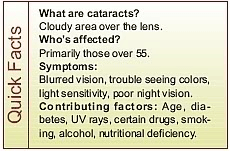 Cataracts
Cataracts
Cataracts are cloudy, opaque areas of the eye lens that interfere with eyesight. Resulting changes in eyesight can be gradual, but severe over time. In fact, about two million cataracts surgeries are performed in the United States every year to regain clear vision (2). Says Passwater, “Cataracts are a pandemic. Around the world, cataracts are the leading cause of blindness. More than 42 million people worldwide have vision so poor they cannot read the big ‘E’ on the eye chart.”
Although we don’t know exactly why cataracts form, we do know that “oxidative insult and the formation of advanced glycation end products (AGEs) have putative roles in the process,” says Kevin M. Connolly, Ph.D., director of scientific affairs and product development at Jarrow Formulas, Inc., Los Angeles, CA.
Regarding the oxidative damage, ultraviolet (UV) rays may play a role. Several experts say UV light can damage the proteins in the eye lens. “When this happens, the lens becomes less transparent and appears cloudy. The lens is a crystalline hard structure inside the eye. It has no blood supply and no nerves. A cataract begins to form when the crystalline proteins lose their shape and structure because of damage from free radicals. The crystalline proteins then clump together, causing the lens to become opaque rather than remain transparent,” Passwater explains. Therefore, many experts suggest reducing UV exposure or using sunglasses with UV protection.
 On the nutrition front, certain factors of our diet may play a role in cataract development. For example, sugar addicts beware: “[Excessive sugar] leads to glycation that crosslinks the proteins to form advanced glycation end products, much in the same manner that free radicals damage the lens proteins,” he notes.
On the nutrition front, certain factors of our diet may play a role in cataract development. For example, sugar addicts beware: “[Excessive sugar] leads to glycation that crosslinks the proteins to form advanced glycation end products, much in the same manner that free radicals damage the lens proteins,” he notes.
Because cataracts and blood sugar may go hand in hand, says Decker Weiss, NMD, FASA, a naturopathic physician based in Arizona and chair of the scientific advisory board at Gaia Herbs, Brevard, NC, “The same ways we prevent and treat diabetes will also apply to cataracts…The use of alpha lipoic acid as an antioxidant and for blood sugar as well as a specific species of cinnamon, Gymnema sylvestre, jambol seed and Indian ginger all may have the dual effect of helping to manage blood sugar and to provide a protective antioxidant effect.”
Says Christian Artaria, director of marketing at Indena S.p.A., Milan, Italy, “These free radicals are damaging to the eye, contributing to cataracts and other eye diseases. Antioxidants from foods and supplements help to quench these damaging free radicals. Therefore, researchers recommend eating fruit and vegetables with antioxidants to help prevent cataract formation.”
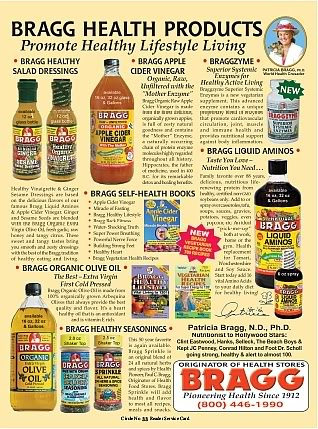 Vitamins C and E are among the most-studied antioxidants on this front. Some influential studies in this area include:
Vitamins C and E are among the most-studied antioxidants on this front. Some influential studies in this area include:
- The Nutrition and Vision Project, in which Harvard and Tufts University researchers found that women who consume 500 mg/day of vitamin C “may lower their risk for more than one type of cataract” (3). Those taking vitamins C and E supplements for more than 10 years “had decreased progression of nuclear cataracts” (2).
- The Second National Health and Nutrition Examination Survey found an association between higher levels of dietary vitamin C and lower cataracts risk (2).
- In a longitudinal study of 764 individuals, regular use of multivitamins reduced the risk of nuclear cataracts by one-third and regular use of vitamin E supplements cut the risk in half (4).
Other beneficial antioxidants may include zeaxanthin and lutein, according to Gowaski. A 2008 analysis of data from the Carotenoids in AREDS research bolsters his point. A study of these carotenoids in about 1,800 women (aged 50–79) indicated, “Diets rich in lutein and zeaxanthin are moderately associated with decreased prevalence of nuclear cataract in older women” (5). The group found women with “high dietary levels of lutein and zeaxanthin had a 23% lower prevalence of nuclear cataract…compared with those with low levels.” And those with the highest levels of these carotenoids were 32% less likely to have nuclear cataracts.
Michael T. Murray, director of product development at Natural Factors, Everett, WA, agrees that lutein is important for cataracts patients. “Three large prospective studies have shown that the intake of lutein was inversely associated with cataract surgery. In other words, the higher the intake of lutein the less likely cataract surgery would take place.” In addition, he says, “Lutein can also help improve visual function in people with cataracts.” In one study of cataracts patients either took 15 mg of lutein, 100 IU of vitamin E or a placebo three times a week for 24 months. “Analysis showed that visual performance (visual acuity and glare sensitivity) improved in the lutein group, whereas there was trend toward the maintenance of visual acuity with vitamin E and a decrease with placebo supplementation,” says Murray.
And, according to Passwater, selenium and sulfur “help protect the eye lens as they help form the water-soluble antioxidant, glutathione, which is extremely effective in preventing cataracts.” He suggests that the best ways to increase glutathione levels are to eat sulfur- and selenium-containing foods (such as eggs, onions, capers and garlic) and to take supplements of glutathione precursors such as lipoic acid and N-acetylcysteine, as well as selenium.
Ataria adds, “Anthocyanins, which are potent antioxidants found in bilberry, have been associated in helping to prevent cataract formation and progression.” Published research supports this statement.
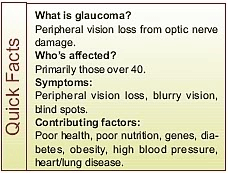 Glaucoma
Glaucoma
Dubbed the “silent thief of sight,” glaucoma is a group of diseases that can damage the optic nerve (fibers that connect the retina and brain) and cause gradual peripheral vision loss (6). This incurable condition, which affects 2.5 million Americans, is often caused by increased pressure inside the eye (7).
Weiss notes that nutrition is key for those with this devastating disease and explains that there are certain risk factors (like asthma, hypertension and steroid use) that can be addressed nutritionally and herbally. “I find that that methylcobalamin, magnesium and anti-inflammatory botanicals as well as smooth muscle-relaxing botanicals such as Jamaican dogwood and ginger can treat the problem and the underlying cause. I also consider putting them on a vegetarian diet and a liver detox with Burdock root and seed until the ocular pressures start to come down.”
According to Schönlau, “Nutritional prevention has been investigated with various vitamins and carotenoids, however, without any success.” Therefore, he concurs with Weiss that the key is dealing with ocular pressure. “The only known preventative measure is to counteract high intra-ocular pressure,” he says.
Like cataracts, oxidative stress may also contribute to glaucoma. Says Connolly, “While medical interventions using very large doses of vitamin C showed some promise in lowering IOP, it is unclear whether simply supplementing the diet with antioxidants would have the same effect.”
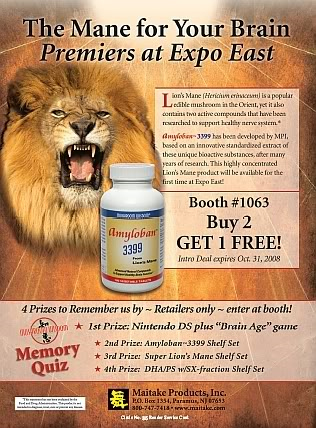 The link between glaucoma and other antioxidants has been studied as well. Artaria of Idena describes a study on bilberry and French maritime pine bark combination extract (Mirtogenol, a combination of Pycnogenol and Mirtoselect bilberry) in which 38 participants with increased intraocular pressure (IOP) were given the extracts or a placebo for two months (8). “For those individuals given the bilberry and pine bark combination, IOP was seen to be lowered in 19 of the 20 patients. Only one of the control patients resulted in an IOP drop,” he says and adds, “This study is one of the first to show a direct impact of dietary intervention to help control IOP helping to reduce the progression of glaucoma.”
The link between glaucoma and other antioxidants has been studied as well. Artaria of Idena describes a study on bilberry and French maritime pine bark combination extract (Mirtogenol, a combination of Pycnogenol and Mirtoselect bilberry) in which 38 participants with increased intraocular pressure (IOP) were given the extracts or a placebo for two months (8). “For those individuals given the bilberry and pine bark combination, IOP was seen to be lowered in 19 of the 20 patients. Only one of the control patients resulted in an IOP drop,” he says and adds, “This study is one of the first to show a direct impact of dietary intervention to help control IOP helping to reduce the progression of glaucoma.”
Schönlau comments on the same research, noting, “This is a major breakthrough as it is the first evidence for dietary prevention of glaucoma. Further clinical studies are in progress to establish the benefits for Mirtogenol for healthy intraocular pressure and glaucoma prevention.”
Essential fatty acids in combination with traditional treatments could represent another opportunity for glaucoma patients. Says Levin, “Glaucoma is commonly treated with synthetic prostaglandin eye drops; you may recognize prostaglandins as a class of regulatory body chemicals that are made from and affected by essential fatty acids from omega-3 and omega-6 oils such as GLA, EPA, etc; These oils will provide good nutrition support, but will not substitute for prescription drugs.”
Retailers should be sure to have a stock of glaucoma support products on hand as the Glaucoma Research Foundation notes that half of all glaucoma patients use alternative therapies to deal with their condition (9).
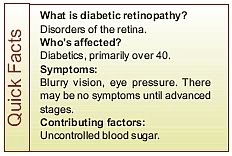 Diabetic Retinopathy
Diabetic Retinopathy
Diabetes is far more than simply a blood sugar problem; it’s a serious condition that can have negative health affects on the kidneys, nerves, cardiovascular system and even the eyes. For example, diabetic retinopathy is a condition in which capillaries swell and cause retinal swelling and vision loss over time. It may progress into a condition that causes blood vessels to close and newly formed ones to weaken, leak blood and block vision (10).
Authorities on the matter feel controlling blood sugar is the key to preventing this condition. The American Diabetes Association notes that the 10-year Diabetes Control and Complications Trial (DCCT) “proved among type 1 patients that improved blood glucose control prevents or delays diabetic retinopathy. Therapy that keeps blood sugar levels as close to normal as possible reduced damage to the eyes by 76% (New England Journal of Medicine, September 30, 1993)” (11). Again, oxidative damage may have a connection here. According to Connolly, “To metabolize the elevated amounts of sugar, eye metabolism shifts away from maintaining antioxidant defenses; this can further contribute to oxidative stress. While there has not been direct evidence that nutrients can slow down this process, there are roles for nutrients in maintaining healthy blood sugar levels (like chromium and alpha-lipoic acid), protecting capillaries from oxidative damage (flavonoids from blackcurrant and bilberry), and slowing the activity of sugar-converting enzymes in the eye (quercetin).”
Other research has focused on French maritime pine bark extract, vitamin C, grape seed, astaxanthin and bilberry. Regarding the latter, Artaria highlights three important studies:
- In the first trial, 40 patients with diabetic or hypertensive retinopathy were given 36% bilberry extract for a month or a placebo (12). “Results demonstrated a significant improvement in patients that were provided bilberry over placebo,” he notes.
- In another, 40 diabetic retinopathy patients used bilberry extract or placebo for a year (13). Says Artaria, “The bilberry extract promoted the regression of hard exudates (white or yellow deposits associated with diabetic retinopathy), a sign of altered permeability in 50% of patients.”
- In the third study, a 36% bilberry extract (480 mg/day) was given to those with diabetic retinopathy for 180 days (14). “The bilberry extract induced a clear improvement in the retinopathy, with marked reduction or disappearance of retinic haemorrhages,” he explains.
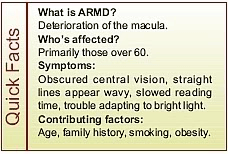 Age-Related Macular Degeneration
Age-Related Macular Degeneration
Age-related macular degeneration (ARMD) is the leading cause of blindness among Americans over 65, affecting about 17 million people. This condition develops after a lifetime of damage to the macula (the center of the retina). “The macula is where most detailed vision occurs,” says Passwater. “As AMD develops, people lose their ability to drive, read and even to recognize faces. They can see things on the periphery, but not so well in the center. After a lifetime of looking directly at something to see it, they now look to the side so that the object appears on the periphery.”
The high incidence rates of this disease may be attributed to “cholesterolphobia,” says Passwater. “ The baby boomers were cautioned to avoid egg yolks, which are rich in zeaxanthin. As a result, this generation tends to be deficient in zeaxanthin and lutein, which are important components of the macula.” According to www.ezeyes.info, zeaxanthin and lutein are found in the macula and “help filter out damaging blue light and sunlight” and “have different functions in protection of healthy vision.” They also neutralize free radicals.
|
A Sight for Dry Eyes Dry eyes causes pain and discomfort that leave many Americans itching for relief. As we age, says Christophe Merville, DPharm, pharmaceutical development manager at Boiron, Newtown Square, PA, “Lachrymal secretions tend to dry up and their natural lubricant and immune substances decrease, leaving the eyes more vulnerable to airborne particles, allergens and infectious agents.” The choice for relief is clear, says Decker Weiss, NMD, FASA, a naturopathic physician based in Arizona and chair of Gaia Herbs’ scientific advisory board. “Dry eyes can be caused by so many reasons that it is difficult to advise anything other than natural tears formulas which are widely available,” he says. When stocking your shelves, look for entirely natural, preservative-free formulas, recommends Merville. Popular ingredients in such products often include calendula, eyebright and Kali muriaticum. Consuming a mix of essential fatty acids, especially with GLA, may help, too. |
Natural Factors’ Murray adds that low levels of these nutrients may contribute to the development of ARMD. “A low level of lutein and zeaxanthin within the macular represent a major risk factor for the disease as patients with macular degeneration have 35–40% less lutein in their maculas than people without macular degeneration,” he says. Unfortunately, a recent Tufts University study shows that people don’t get enough lutein and zeaxanthin in their diets to prevent ARMD, so supplementation is a good option.
Besides prevention, these nutrients are also said to improve vision in ARMD patients. According to Murray, “In subjects with macular degeneration, 10 to 15 mg of lutein daily has led to significant improvements in several objective measurements of visual function including glare recovery, contrast sensitivity, and visual acuity vs. placebo. Patients taking a minimum of 10 mg of lutein daily also experienced a 50% increase in macular pigment density relative to those on placebo.”
The omega-3 DHA is also key for eye health. Says Marshall, “Evidence suggests that two servings of fish per week can dramatically reduce the risk of developing ARMD (50–70%).”
The reason why, according to information from Nordic Naturals, is that DHA “attains its highest concentration anywhere in the body within eye tissue” (15). Higher intake of omega-3s, the company contends, is associated with a decreased risk of ARMD and cataracts. A 2008 meta-analysis of nine studies (totaling 88,974 people, including 3,203 ARMD patients) indicated “high dietary intake of omega-3 fatty acids was associated with a 38% reduction in the risk of late ARMD…Fish intake at least twice a week was associated with a reduced risk of both early ARMD” (16).
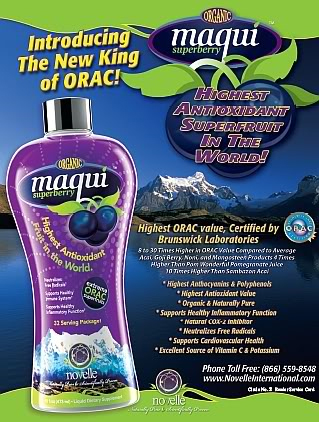 Schönlau adds that other studies like AREDS (Report No. 20) indicated that omega-3s may help protect against advanced wet ARMD. “An epidemiologic study from Europe published in the August issue of the American Journal of Clinical Nutrition found that eating fish at least once a week halved the risk for wet AMD,” he says while cautioning, “Others are likewise hesitant to routinely recommend fish oils for wet AMD prevention. The results so far are very encouraging and the potential for fish oils in eye health will represent a hot research topic in the future.”
Schönlau adds that other studies like AREDS (Report No. 20) indicated that omega-3s may help protect against advanced wet ARMD. “An epidemiologic study from Europe published in the August issue of the American Journal of Clinical Nutrition found that eating fish at least once a week halved the risk for wet AMD,” he says while cautioning, “Others are likewise hesitant to routinely recommend fish oils for wet AMD prevention. The results so far are very encouraging and the potential for fish oils in eye health will represent a hot research topic in the future.”
Artaria adds that the previously described AREDS research “showed that high levels of antioxidants and zinc significantly reduced the risk of ARMD and its associated vision loss. Already in progress is the second phase of AREDS called AREDS II where additional nutrients such as lutein, zeaxanthin and specific omega-3 fatty acids will be assessed.”
Bilberry anthocyanins may also have a protective effect against ARMD. Says Artaria, “In a nut shell, bilberry anthocyanins are potent antioxidants that help to quench free radical production in the eye region. Bilberry has a strong affinity for the retinal epithelium of the eye, the area affected by AMD.”
Industry experts also note that the following has research support for ARMD: multivitamins, vitamins A/C/E, magnesium, bilberry, ginkgo biloba, garlic, selenium, taurine, chromium and zinc.
Setting Your Sights on the Future
As with most aspects of good health, an ounce of prevention is worth a pound of cure. Says Marshall of age-related blindness, “Once the damage is done, it can be too late. All of the evidence suggests that higher intakes earlier in life result in lower risk. Once you are older and free-radical damage has occurred to ocular tissue, it is more difficult to maintain vision.”
Industry insiders recommend that younger clientele (those under 50) consider adding the following nutrients to their nutritional regimen:
-
“The cumulative oxidative damage to the eyes, sometimes coupled with issues related to management of blood sugar and blood pressure, can lead to a decline in eye health as we age,” says Levin. He recommends eating various antioxidant-rich, plant-based foods and “supplementation with a good antioxidant-rich multivitamin that includes lutein and zeaxanthin would be highly advised, as well as a supporting regimen of antioxidant supplements such as alpha-lipoic acid, vitamins A, C and E, etc.”Another Reason to Quit
Most smokers know that their habit can have serious health consequences for the heart and lungs. Another cost to consider is eye health. Smoking is a risk factor for numerous vision loss problems. In fact, macular degeneration is far more prevalent in smokers than non-smokers (1). The reason why is that tobacco interferes with the body’s use of carotenoids, thereby reducing lutein and zeaxanthin levels. These important nutrients are concentrated in the macula and help transfer oxygen to tissues, protect from UV damage, sharpen vision and reduce glare (1).
Tobacco also depletes vitamin C levels. According to health journalist Bill Sardi, “For every cigarette smoked, the body is depleted of about 25 mg of vitamin C. So, a pack-a-day smoking habit would require the body to replace about 500 mg of vitamin C daily” (1). Vitamin C plays a major role in eye health, including reducing the risk for cataracts, macular degeneration and glaucoma (1).
Other effects of tobacco on the eyes include increased iron levels in the lens (which may damage tear glands) and the development of tobacco amblyopia, a condition that causes impaired vision and optic nerve damage.
Reference
1. B. Sardi, User’s Guide to Eye Health Supplements (Basic Health Publications, North Bergen, NJ 2003).
- The eye can gradually lose macular pigment and become more susceptible to disease, and become more susceptible to disease, says Gowaski, who suggests lutein (5 mg) and zeaxanthin (1 mg) for those in their 40s and 50s.
- Artaria suggests using antioxidant combination blends that are formulated for the eyes, which include vitamins such as C and E and eye health giants such as anthocyanins from bilberry and lutein.
- Fish oils for cataract and ARMD prevention is key for people aged 30–50, according to Schönlau, who also recommends flavonoids such as bilberry extract and Pycnogenol for retinopathy prevention.
- Cyanotech’s Capelli says everyone over 30 should use carotenoids as a preventative measure. “Lutein has by far the most supporting research, but astaxanthin and zeaxanthin are close behind. In fact, astaxanthin has been shown to have superior antioxidant and anti-inflammatory properties in comparison with other carotenoids,” he says. “And due to its ability to cross the blood-brain barrier and the blood-retinal barrier and bring this superior antioxidant and anti-inflammatory protection right into the retina and macula, astaxanthin appears to be the strongest eye protective nutrient of all.”
- And last, it’s important that consumers check in with an eye specialist throughout life, not just when there’s a problem. Beeta Little, director of product development and technical services at Bluebonnet Nutrition Corporation, Sugar Land, TX, advises that, “Regular checkups, a healthy diet and plenty of antioxidants are crucial to maintain optimal eye health as individuals age.” WF
References
- National Eye Institute, “Age-Related Eye Disease Study—Results,” http://www.nei.nih.gov/amd/
- American Optometric Association, www.aoa.org, accessed August 26, 2008.
- The Eye Digest, “Nutrition & Vision,” www.agingeye.net, accessed August 26, 2008 (no longer active).
- M.C. Leske et al., “Antioxidant Vitamins and Nuclear Opacities: The Longitudinal Study of Cataract,” Ophthalmology 105, 831–836 (1998).
- S.M. Moeller et al., “Associations Between Age-Related Nuclear Cataract and Lutein and Zeaxanthin in the Diet and Serum in the Carotenoids in the Age-Related Eye Disease Study, An Ancillary Study of the Women’s Health Initiative,” Arch. Ophthalmol. 126 (3), 354–364 (2008).
- B. Sardi, Nutrition and the Eyes, Vol. I–III (Health Spectrum Publishers, Montclair, CA, 1994).
- NYU Medical Center, School of Medicine, www.med.nyu.edu/ophthalmology, accessed August 27, 2008.
- R.D. Steigerwalt, Jr., “Effects of Mirtogenol on Ocular Blood Flow and Intraocular Hypertension in Asymptomatic Subjects,” Molecular Vision, July 10, 2008.
- Glaucoma Research Foundation, “Alternative Medicine,” www.glaucoma.org, accessed August 27, 2008.
- F. Murray, Nutritional Supplements for Diabetes (Hampton Roads Publishing Company, Charlottesville, VA, 2003).
- American Diabetes Association, “Diabetes and Retinopathy,” www.diabetes.org/diabetes-statistics/eye-complications.jsp, accessed August 27, 2008.
- M. Perossini et al., “Diabetic and Hypertensive Retinopathy Therapy with Vaccinium myrtillus Anthocyanosides (Tegens): Double-Blind Placebo-Controlled Clinical Trial,” Ann. Ottalmol. Clin. Ocul. 113, 1173–1190 (1987).
- P. Repossi et al., “The role of Anthocyanosides on Vascular Permeability in Diabetic Retinopathy,” Ann. Ottalmol. Clin. Ocul. 113, 357–361 (1987).
- P.L. Orsucci et al., “Trattamento Della Retinopatia Diabetica con Antocianosidi. Indagine Preliminare,” Ann. Ottalmol. Clin. Ocul. 4, 77–81 (1983).
- “Fish Oil for Eye Health,” (Nordic Naturals, Watsonville, CA, 2008).
- E. W-T Chong et al., “Dietary Omega-3 Fatty Acid and Fish Intake in the Primary Prevention of Age-Related Macular Degeneration: A Systematic Review and Meta-Analysis,” Arch. Ophthalmol. 126 (6), 826–833 (2008).
Select Category OfferingsBluebonnet’s Eye Antioxidant Formula Vcaps combines various amino acid, vitamin, mineral and herbal antioxidants for maintaining eye health. The company also offers Nutra-Vision (combines beta-carotene, vitamin C, natural vitamin E, copper and zinc), Lutein 20 mg softgels, Zeaxanthin 4 mg Plus Lutein Softgels. Boiron manufactures Optique eye drops for dryness relief. Carlson Labs makes Able Eyes (lutein, DHA), Eye-Rite (bioflavonoids, antioxidants), Lutein, Mostur-Eyes (EFAs, antioxidants) and Right for Macula (lutein, zeaxanthin, DHA). Chrysantis offers EZEyes zeaxanthin, an all-natural carotenoid that helps prevent eye disease and maintain healthy vision. Cyanotech distributes BioAstin astaxanthin, a nutrient known to prevent and to reverse eye fatigue from overuse and aid in other aspects of eye health. DSM supplies Optisharp zeaxanthin. Gaia Herbs offers Vision Enhancement in a Liquid Phyto-Cap that combines concentrated billberry, grape seed, lutein and astaxanthin. Also offered is Anti-Oxidant Supreme, which combines hawthorn, green tea and a super-critical rosemary extract. Indena makes Mirtoselect bilberry extract from Vaccinium myrtillus L. fresh berries, the species containing the highest concentration of anthocyanins. Jarrow Formula offers Vision Optimizer (a combination of eye health-promoting nutrients), Blackcurrant + Lutein and Bilberry + Grapeskin. Kemin makes FloraGLO lutein. Natural Factors manufactures Advanced Eye Factors, a combination of coenzyme Q10, beta-carotene, vitamins C and E, lutein, zeaxanthin, lycopene, B vitamins, zinc, selenium and copper. Natural Health Science supplies Pycnogenol, a French maritime pine bark extract that has been demonstrated in five clinical studies to be effective in stopping the progression of diabetic retinopathy. Nordic Naturals offers DHA-eye, which supplies a concentrated fish oil high in DHA combined with lutein and zeaxanthin (fat-soluble xanthophylls specific for reducing AREDs). NOW Foods makes Clinical Strength Eye Support formula, featuring a full range of eye herbs and nutrients in quantities and proportions that don’t limit lutein absorption. In addition, NOW’s Omega 3-6-9 formulations are available. Solgar offers a variety of products in this category including carotenoids (Lutein Lycopene Carotene Complex Vegetable Capsules and Natural Advanced Carotenoid Complex Softgels), vitamin A (Dry Vitamin A 5000 IU Tablets, Vitamin A 10,000 IU Softgels and Vitamin A & D 10,000/400 IU Softgels), Vision Guard with Lutein Tablets and Bilberry Ginkgo Eyebright Complex Plus Lutein Vegetable Capsules. |
Published in WholeFoods Magazine, October 2008


